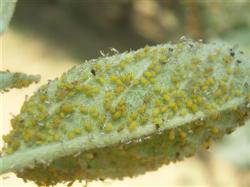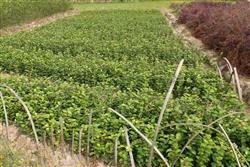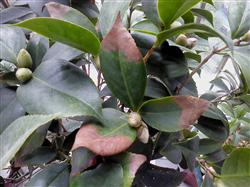What are the pests of camellias to be controlled?

What are the pests of camellias to be controlled? Please give a detailed introduction to the following pests of camellias: aphids [morphology and harm] aphids are divided into winged aphids and wingless aphids. Winged viviparous female aphid, transparent wings, dark brown body; wingless viviparous female aphid, wingless, dark brown body. In addition, if the early appearance is similar to the adult, the body is wingless and yellowish. Adults and nymphs gather on the tender shoots of camellias to absorb juice, which shrinks the bud leaves of the injured camellias and seriously affects their growth. The excrement of aphids can cause bituminous coal disease. [control method] ① in the peak period of early occurrence of aphids, spraying camellia plants with 50% phosphoamine emulsion 2000 times or 50% dimethoate emulsion 1000 times, once every 3 to 5 days, 3 times in a row, aphids can be eliminated. ②: 0.5kg of cigarette stick, 0.25kg of quicklime, 1015L of water, soaking for one day and night, filtering and removing residue for spray prevention and control, the effect is good. Scale insects [habits and hazards] there are many species of scale insects harmful to camellias, including cotton-blowing scale, red wax scale and bran shield scale. Scale insects lay a large number of eggs, and each female can lay about a thousand eggs, with 3-5 generations a year. Most of the fertilized females overwintered on the branches and leaves, began to lay eggs in March of the following year, and mostly concentrated on the twigs and leaves to absorb leaf juice. The damaged leaves changed from green to grayish green, and finally to yellow. In severe cases, the branches and leaves were covered with scale insects, causing the whole plant to wither and yellow to death. Its secretions can cause bituminous coal disease. [control methods] ① artificial control: most of the insects are clustered, and the insect can be killed directly on the branches and leaves when the number of occurrence cycles is small. ② chemical control: it is necessary to grasp the characteristics of weak drug resistance of newly hatched nymphs and grasp the time period of drug application. The adults are waxy and the control effect is poor. Rosin ∶ caustic soda (∶ water = 3 ∶ 2 ∶ 10) is a mixture of rosin and caustic soda (caustic soda) boiled with water. The solution is dark brown and mainly contains excessive free alkali and rosin soap. It has a strong corrosive effect on the wax cover of scale insects and is an effective agent to control many kinds of scale insects. Generally use 10 times liquid in winter and 20 times liquid in summer. It can also be dried with 40% omethoate 5 times solution. ③ improved the ventilation and light transmission of camellias and inhibited the growth and reproduction of scale insects. Stem borer [damage] this insect mainly harms the shoots of camellias. The killed branches withered at first and withered for a long time. Generally, spring shoots are mainly damaged from March to April, and summer shoots are mainly damaged from August to September. There are early holes and fecal discharge on the damaged branches, and the branches eventually dry up. [control method] ① cut off and centrally burn the branches with stem borer. ② can use light to trap and kill adults. During the peak period of adult Eclosion, ③ can be sprayed with 20% dimethoate emulsion 500x or 90% trichlorfon 1000 times, or at larval stage. The black whitefly mainly harms the camellia leaves and absorbs the juice of the leaves, and its secretions can lead to a large number of bituminous diseases, seriously affecting the normal photosynthesis of camellias, causing a large number of falling flowers and so on. [control method] ① in winter or early spring, cut off the branches and leaves of insects and burn them centrally to get rid of the source of insects. During the peak incubation period of nymphs, ② can be sprayed with 25% imidophos, 50% marathon 800 × 1000 times, or 40% dimethoate, 50% dioxin and 50% fenitrothion 1000 times, or with buprofezin 1000 times, once every 7 days, the effect is good. Tea shoot moth [harm status] the tea shoot moth harms the leaf flesh of camellias and eats the spring shoots of camellias with larvae, which gradually wither and die. [control methods] in the peak period of adults, ① can cut off the damaged leaves and branches and burn them centrally in order to eliminate pests. In the period of larval damage, ② can be sprayed with 500 ~ 1000 times of trichlorfon, or 1000 times of fenitrothion, omethoate and so on. Tea poison moth [control method] the larvae of tea poison moth mainly eat leaves. The first and second instar larvae were clustered on the back of camellia leaves, feeding on the lower epidermis and mesophyll, leaving only the upper epidermis and veins, so that the injured camellia leaves became a translucent reticular membrane and soon withered and yellow. The third instar larvae began to feed on the whole leaf, and often moved to the upper part of the crown to do harm, while spitting silk and forming a net. The food intake of the fourth instar larvae increased gradually, and the food intake of the larvae increased greatly at the fifth and sixth instar. After eating the leaves of the complete camellias, the larvae moved to other places to continue to do harm, and the consequences were very serious. [control method] ① is effective in controlling the 3rd instar larvae. ② tea moth generally overwinters with egg blocks, which can be picked and burned in winter and early spring to eliminate the insect source. In order to prevent poisonous hair from hurting your hands, apply soapy water on your hands before picking. ③ can be controlled by spraying 1 000 to 1 500 times liquid such as omethoate, trichlorfon and marathon. ④ uses the phototaxis of adults to trap and kill by light. Leaf miner larvae sneak into the skin of tender leaves and shoots of camellias to eat food. The damage began in May, and the pest became more serious in June, and the pest was the most serious from July to September. Semi-transparent markings appeared in the epidermis of the young leaves, and white or translucent bubbles appeared in the epidermis of the new shoots. Camellia plants grow poorly and their leaves are twisted and shedding. [control method] ① can be controlled by spraying 5000 times of permethrin and 1000 times of omethoate before and after the occurrence of insect pests. If there are nymphs in ② family potted camellias, they can be killed by artificial capture. Tea inchworm [harm condition] the tea inchworm is harmful to the larvae eating leaves. When it occurs, the leaves and tender stems of camellias can be eaten up, which seriously affects the growth of camellias and makes it unable to carry out photosynthesis. The control effect of before the 3rd instar larvae is good. The commonly used insecticides are 2000-4000 times of trichlorfon, 800-1000 times of imidophos, 2000 times of permethrin, 1000 times of phoxim, and 1000-1500 times of dichlorvos, omethoate, marathon and so on. Click to get more camellia planting techniques click to get more flowers and trees planting techniques
- Prev

How to cut camellia in spring?
How to cut camellias in spring? Please give an introduction to Camellia cutting time from early April to May is appropriate. Select the semi-lignified brown branches of the current year, cut them into cuttings of 10 cm to 15 cm with 3 buds, and cut them below the basal nodes. One to two leaves remain on the cuttings. Then he went to the bathroom.
- Next

What if the leaves of camellias are scorched?
What if the leaves of camellias are scorched? What caused it? how to prevent and cure it? Camellia is one of the most famous flowers in China. It has been loved by people for thousands of years because of its graceful tree appearance, evergreen seasons, graceful flowers, delicate colors and long flowering period. The habit of camellias, the requirements for light, is happy.
Related
- Fuxing push coffee new agricultural production and marketing class: lack of small-scale processing plants
- Jujube rice field leisure farm deep ploughing Yilan for five years to create a space for organic food and play
- Nongyu Farm-A trial of organic papaya for brave women with advanced technology
- Four points for attention in the prevention and control of diseases and insect pests of edible fungi
- How to add nutrient solution to Edible Fungi
- Is there any good way to control edible fungus mites?
- Open Inoculation Technology of Edible Fungi
- Is there any clever way to use fertilizer for edible fungus in winter?
- What agents are used to kill the pathogens of edible fungi in the mushroom shed?
- Rapid drying of Edible Fungi

